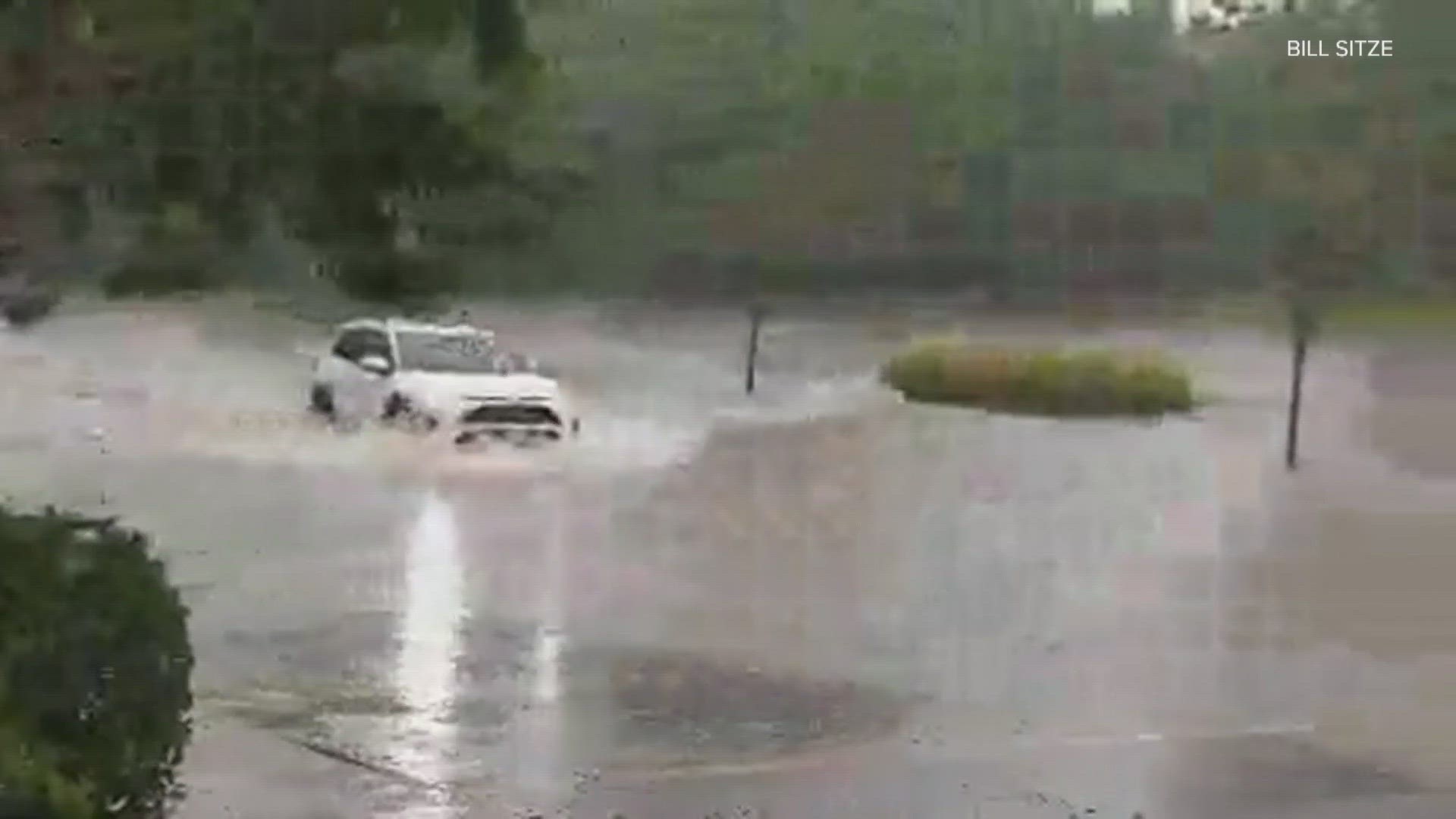ST. LOUIS — The Metropolitan St. Louis Sewer District (MSD) and area municipalities spent Thursday and even the last few months preparing for the next big rain event.
The MSD spent Thursday cleaning out storm drains with what they call a vector truck so that water rushing through the streets has somewhere to go.
“This is essentially a truck with a giant vacuum on it and they were inspecting and cleaning storm drains. So a lot of times storms will wash, yard waste, leaves, branches, trash, all kinds of things down into the storm drains, and those can clog the drains so that they don't work efficiently,” MSD Project Clear spokesperson Bess McCoy said.
MSD said they have quite a few crews on standby to help in areas where issues pop up and while they’re not a flood authority there are some things they can do.
“So if you have water coming into your home through a basement drain or a low point in your house, absolutely give MSD a call. If you see ponding around a storm drain, that's where you should also give MSD a call. We'll come out and take care of it,” McCoy said.
Speaking of areas where water needs somewhere to go, the City of Brentwood said since the last major flooding event they have spent a lot of money on creek cleanup.
“After the flooding events this past summer, with all the damage to the businesses, we, the city of Brentwood, spent about a quarter of $1 million to clean out Black Creek. A lot of the debris that was causing this to stop the flow of the water in Black Creek and thereby causing it to jump the banks,” Brentwood Mayor David Dimmitt said.
Dimmitt said they’ve completed 85% of their flood mitigation efforts through Brentwood Bound and expect to finish in the next few months.
In the last few weeks, they demoed a bridge causing problems for Deer Creek.
“We put in a new bridge and the nice thing about the new bridge is it's taller and it's we were able to widen the banks where the new bridge is. So it kind of removes the bottleneck that was there with the old bridge,” Dimmitt said.
If you have any issues with a basement drain or storm drain in your neighborhood you can call MSD at 314-768-6200.
They also have these tips for homeowners:
- Be sure gutters are free of leaves, branches, and other blockages: Blocked gutters can cause water to cascade down the side of a structure or pond on a roof, both of which can cause rainwater to enter a home.
- Clear downspouts and make sure they are directed away from your house: Misdirected downspouts can focus water toward a home, causing flooding within the structure or foundation damage.
- Clean window wells: Many homes have window wells outside their basement windows. Be sure these areas are free of leaves and other debris so they can drain properly and as quickly as possible. If water accumulates, it presses up against the basement window, which in turn can seep into or even flood your basement.
- Clean stairwell drains: Homes with basement access will have a drain at the bottom of the stairwell. Make sure this drain is not blocked and is clear of leaves and other debris. Water accumulating in a stairwell can seep in and flood your basement.
- Check sump pump drainage hoses: Water from a sump pump should drain away from the house so that it does not flow back into the basement. Many sump pumps incorrectly lead to the basement drain – the pump’s drain should lead outside. It’s a good idea to have a backup pump in case the primary pump fails.
- Clear drainage paths on your property: In many parts of our community, small creeks, streams, and other waterways provide stormwater drainage. Ensure that the path rainwater travels from your property to drain into these waterways is clear of possible blockages. Portable pools, loose recreational equipment, piles of yard debris (grass clippings, branches, etc.) and the like can block these drainage ways and stop water from draining as quickly as possible from your property. Remove these possible blockages and ensure that rainwater has an unimpeded flow to the waterway.
- Limit indoor water use: By limiting the use of dishwashers, washing machines, bathtubs, and the like during intense rainfalls, less demand will be put on the sewer system. In those parts of our service area with sewers handling both wastewater and stormwater, the ability to handle stormwater will be increased.
- Clear streets and other areas of debris: Leaves, plastic bottles, branches, and other debris can easily block inlets. When high intensity rainstorms hit, these items are washed into the inlets. Items that make it into the sewer decrease the amount of water that can be handled. Items that don’t go into the sewer block inlets, which in-turn causes street and other localized flooding.
- Keep local creeks and streams clear: Local creeks, streams, and other waterways provide stormwater drainage for many parts of our community. The vast majority of these waterways are private property. Thus, responsibility to keep these waterways maintained and clear falls on adjacent property owners or subdivisions as a whole. Ensuring that these waterways are clear of grass clippings, branches, fallen trees, and other debris will allow rainwater to be carried away as quickly as possible.
Download the free 5 On Your Side app to get the latest watches and warnings and track conditions live with our interactive radar. Use the links below to download now.
5 On Your Side news app

